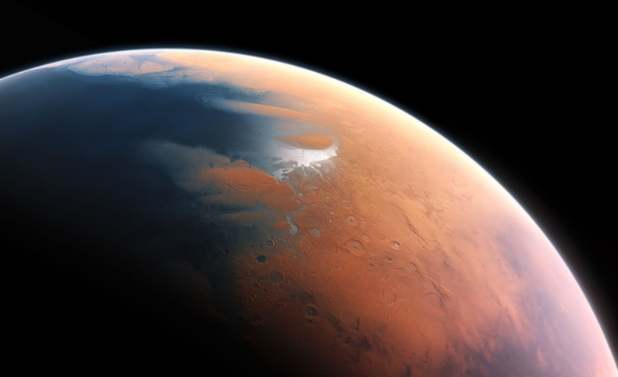
The European Space Agency (ESA) is setting its sights on Mars with its ambitious Strategy 2040 plan, aiming to overcome the myriad challenges of interplanetary exploration. Dr. Orson Sutherland, a program manager at ESA responsible for Mars exploration, emphasizes the dual nature of ambition and reality in these efforts. “There’s ambition and then there’s reality,” he notes, highlighting the technical, physiological, and psychological hurdles that must be addressed before a manned mission to Mars can become a reality.
Dr. Sutherland stresses the importance of a responsible approach, even as there are individuals willing to take the risks involved. “We have to do it in a way which is responsible,” he says, acknowledging the bravery of those eager to venture into the unknown.
Addressing the ‘Small’ Problems
Imagine it’s 2046, and as your rocket ascends into space, you breathe a sigh of relief when the ship’s diagnostics confirm optimal radiator function. In the vacuum of space, where convection and conduction are absent, a radiator failure could lead to catastrophic overheating. These are the “small problems” that Dr. Sutherland refers to, often overlooked in the grand vision of landing a rocket on Mars.
“There are so many small problems that don’t seem sexy enough when you think about trying to land a big rocket on the surface,” he explains. Yet, these issues, including radiation, dust, and biological threats, are critical to mission success. While the media may mockingly dub you the “Little Things Lead,” among your fellow astronauts, your role is revered.
Building a Safe Haven
Your mission commander jokes about the sensational headlines featuring images of Martian colonies with domes and hallways. In reality, constructing such structures on Mars is impractical; instead, bases must be underground to provide adequate protection. “At about 1.5 metres depth, you get effective full protection, full shielding,” Dr. Sutherland says, referring to the necessary defense against solar radiation that Mars’ thin atmosphere cannot filter.
This approach was informed by the Rosalind Franklin rover, which was the first to drill to such depths on Mars. Launched in 2028, it paved the way for human missions by providing crucial data through the Mars Organic Molecule Analyser (MOMA), which searched for organic molecules beneath the surface, where life might exist.
The NASA-ESA Mars Sample Return mission was equally pivotal, proving the feasibility of a round trip by bringing samples back to Earth for analysis.
Overcoming Clashing Ambitions
Your crew is focused on minor course corrections, as Mars is a small, moving target in the vast Solar System. Launch windows occur only every 26 months, making precise planning essential. A failed mission would mean waiting until 2048 for another opportunity.
Recalling SpaceX’s failed launches in 2025, which delayed their efforts to send a humanoid robot to Mars, highlights the importance of demonstrating the necessary technology before attempting manned missions. This mission serves as a demonstration for future endeavors, though it’s uncertain if competing ambitions will align again.
“There is a synergy between colonial ambitions and scientific curiosity,” Dr. Sutherland observes. “I think we just need to make sure we do it in a way that both views are respected and it’s in the best interests of all humanity.” This sentiment is the driving force behind the current mission, balancing the desire to colonize with the quest for understanding.
Scientific Pursuits and Discoveries
The geology of Mars, once home to liquid water, holds secrets about the Solar System’s evolution. The crew is excited about the potential discoveries on the Red Planet’s surface. The scientific journey has already begun, with experiments testing the effects of prolonged space flight during the nine-month voyage to Mars.
“I have no doubt we will achieve [colonies on Mars],” Dr. Sutherland asserts. “That is not the question. The question is when and under what circumstances.” This mission challenges each crew member to reflect on their motivations—whether to own or to learn.
Ensuring Responsible Exploration
Two essentials guide the mission. First, respecting the COSPAR rules to minimize the environmental footprint on Mars is paramount. This involves meticulous tracking of all interactions to preserve Earth’s biological integrity upon return.
“I think we as Europeans want to ensure that we can maintain a pristine environment where we’re going,” Dr. Sutherland emphasizes, whether on Mars or elsewhere in the Solar System.
The second essential is resource acquisition. “You’re going to need to be able to get the resources in situ to survive and to come back,” he explains. This means sourcing water, nutrients, and building materials from Mars itself. For some crew members, in situ resource utilization is a fascinating experiment; for others, it’s a thrilling challenge.
As humanity seeks to deepen its understanding of Mars and its potential to support life, both ancient and future, the crew is united in their commitment to work together toward this common goal.







